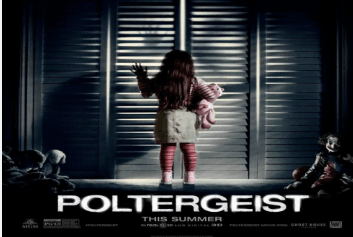The Skeletons’ Tale
In a famous scene from “Poltergeist,” the Freeling family’s home becomes chaotic. JoBeth Williams, playing Diane Freeling, takes a swim in the family pool, which is now muddy and rainy. But she discovers something unexpected – it’s filled with dead bodies.
The skeletons in this scene weren’t fake; they were real. Crew members bought them from a medical supply company. Why did they do this? It was cheaper than making fake skeletons or buying ones already made.
The Moral Dilemma
The choice to use real skeletons in “Poltergeist” sparked a debate about how human remains are treated in movies. Even though money and art influenced the decision, ethical worries are real.
In the past, using real bones in films was usual, but nowadays, it’s tough to imagine it being okay.
The Poltergeist Curse
Some people connect the use of real skeletons to the supposed “Poltergeist curse.” This curse idea says that people involved with the movies had bad luck. It’s probably just a scary story, but it adds more mystery to the film’s story.
The “Poltergeist Curse” is a rumor linked to the Poltergeist movies, suggesting bad things happened to people working on them. It’s connected to the deaths of two young actors within six years of the first and third movie releases.
Actress Dominique Dunne, who played Dana Freeling in the first Poltergeist movie, was killed by her ex-boyfriend. Heather O’Rourke, who acted as Carol Anne Freeling in all the movies, died at 12 because of problems from an unknown stomach issue.
The curse is often linked to using real human bones in the first movie. But many people from the cast and crew, like Zelda Rubinstein who played Tangina, don’t believe in the curse.
The “Poltergeist Curse” is a spooky story, but it’s likely just sad coincidences, not a magical curse.
The 1982 film “Poltergeist” did use real skeletons as props, which many trustworthy sources and past practices confirm. This scary fact brings a real-life fright to the movie, making it unforgettable in cinema history.
Examining the Evidence: Separating Fact from Fiction
While the rumor has persisted, there’s a dearth of concrete evidence to support it. Here’s a breakdown of the key points to consider:
- Lack of Credible Sources: No official documentation from the production, special effects crew, or prop department mentions the use of real skeletons.
- Industry Regulations: Strict regulations govern the use of human remains as props in film productions. Obtaining and utilizing real skeletons would be a complex and unethical process, raising serious questions about the film bypassing these protocols.
- Special Effects Capabilities in 1982: Though not as advanced as contemporary CGI, prosthetic and special effects techniques in the early 1980s were well-developed enough to create realistic skeletons for film use.
- Alternative Explanations: Some theories propose the use of animal skeletons, though this too would raise ethical concerns and require permits. More likely, the props department employed a combination of techniques, including meticulously crafted artificial skeletons and innovative special effects methods.
The Haunting Legacy of the Rumor
Despite the absence of solid proof, the rumor of real skeletons in Poltergeist has become an ingrained part of the film’s lore. It adds an extra layer of unease to the viewing experience, blurring the lines between cinematic fiction and disturbing reality.
The rumor has also fueled speculation about a supposed curse plaguing the production. Several cast members, including young actress Dominique Dunne (Dana Freeling) and special effects artist Craig Reardon, tragically died in the years following the film’s release. While these events are undeniably sad, they were likely unrelated to the film itself and more a case of unfortunate coincidences.




